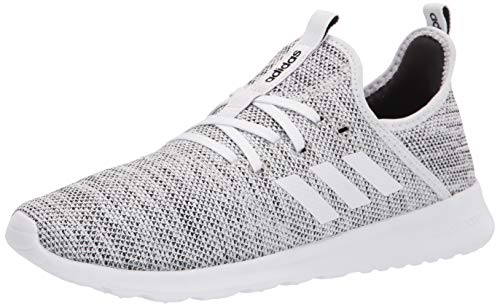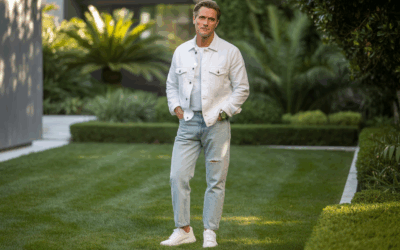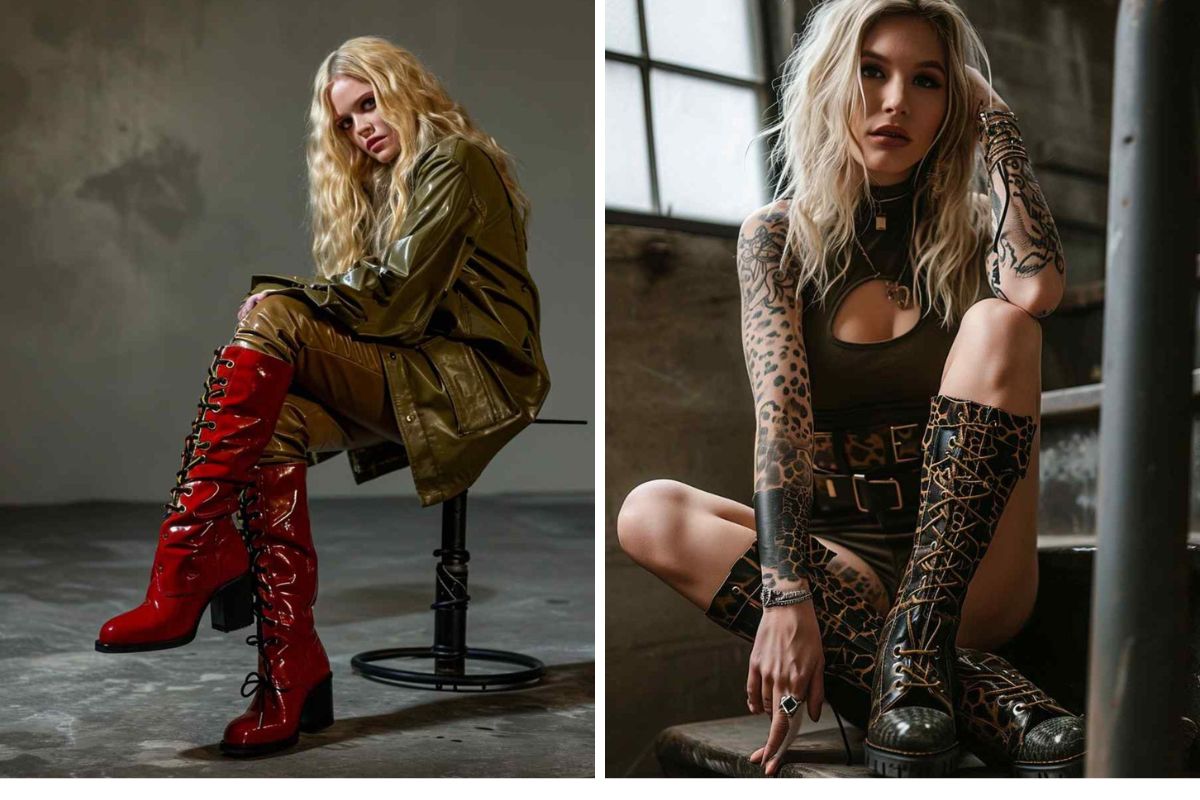
It took nine painful months for me to realize that the pain in my knee was due to the wrapping on my feet. Had I been advised on the proper shoes for my running, I might have avoided the slick marketing of a shoe built for a different purpose.
Cross-training and running shoes are not comparable, as they are built for very different activities in very different contexts. Cross trainers are designed for low-load indoor activities with sustained ground contact. Running shoes are for high-load outdoor activities with minimal ground contact.
To avoid the wrong choice, it’s worth considering the differences and then matching your shoe type to fit the activity you’re engaged in.
FYI, thanks to AI imagery software, we’re able to create very specific fashion examples to illustrate the points being made.
What are Cross Training Shoes?
These shoes are designed for a variety of fitness activities. These primarily occur in indoor gyms and include weight lifting, aerobic routines like Zumba, basketball, and cycling. It provides for the use of gym equipment like the elliptical.
Cross-training shoes physically resemble sneakers, with design-derived differences that we discuss below. They have rubberized soles and uppers in a combination of synthetic materials and leather. The close physical resemblance leads to them being substituted for or confused with running shoes.
Plan Your Perfect Ensemble
Get 5 personalized outfit ideas with accessories in seconds
What are Running Shoes?
Running shoes are sneaker-shaped and come in three varieties:
Sprinting shoes are designed to provide surface-frication protection for sprinters. Because they spend little time running, added security is traded for lightness.
Endurance running shoes cover the middle and long distances. They provide protection and support for the demands of athletes who may run for hours at a time.
Trail running shoes are designed around the rigors of off-road running. They optimize surface-friction protection and ground proprioception.
How are they Different?
While visually similar, the differences are due to the differences in design objectives. These objectives serve the dissimilar physical challenges of cross-training and running. These divergent design objectives find expression in the differences in features between the two shoe types.
Design Features
Protection

Protection is not a significant design feature of cross-training shoes. Consequently, running in these shoes exposes the runner to injury risk.
Runners impact the ground with three times their body mass. Endurance runners do this for hours at a time. On ground impact generates counterforces that travel up the landing leg, inflicting shocks on the ankles, knees, and hips.
Running shoes have cushioned soles to protect against these forces.
Stability
Cross-training involves weight lifting, where athletes often have to support mass above their normal carrying weight. During this activity, the athlete has sustained contact with the ground, and the weight introduces downward pressure on the feet, leading to a loss of balance.
Cross-training shoes provide stability to help the athlete maintain her footing. Running shoes are not a function, as runners have minimal ground contact, with no unusually distributed weight.
Weight Minimisation

Runners need speed, and any extra weight retards performance. Sprinting shoes minimize the weight to ensure maximal performance. Endurance shoes have to optimize weight, as this is balanced against the cushioning demands referred to above.
Crossfit athletes generally do not need speed. To the extent that they do, it is due to the static exertion of muscular power, e.g., spinning, which does not require transporting the body. As a result, extra weight does not need to be shaved off the shoes.
Energy Redirect
We have mentioned the reactive ground impact forces that runners generate. A modern trend in running shoes is to use materials that convert this reactive energy to a propulsive force that moves the body forward. Earlier designs split the power between ground dissipation and skeletal shock.
Energy redirect is not a function of cross-training shoes, as cross-training generates negligible ground impact force. Running in cross-training shoes exposes the athlete to undirected energy, which will find its way to her joints.
Proprioception

Runners maintain a high cadence, measurable as the number of times their feet touch the ground per minute. They do not spend much time feeling the ground beneath them. Road running shoes are not designed to make the runner feel the ground beneath her.
An exception is trail running shoes. These require proprioception, as the runner has to adjust her pace, cadence, and stride length in response to the texture of the terrain below. Cross-training shoes are similarly proprioceptive, not to cater to changes in the landscape but to give the cross-training athlete a better-stabilizing grip.
Waterproofing
Running is an outdoor activity. The materials of running shoes are designed to protect the runner passing through puddles and ensure the durability of the shoe as it passes through the wet. Because CrossFit happens indoors, no adjustment for the moisture is required.
Gait Correction

Running shoes come in varieties that compensate for errors in gait. These include shoes for overpronators and stability shoes for runners whose feet have excessive sideways flexion.
Cross-training has varied, short-range motion, so there is no single gait to correct. Runners struggling with flexion and pronation are exposed to the injury risk if they use shoes that leave their gait eccentricities untreated.
Range of Motion
Running happens in a forward-only plane, whereas cross-training has a much more comprehensive range of motion. The curvature of cross-training soles provides for support across this broader range. Cross-training in running shoes provides less stability throughout this more expansive range, increasing the risk of an accident.
Flexibility

Further to range broader range of motion, cross-trainers need to be flexible in multiple planes. In contrast, road-running shoes provide only forward flexion, with stability shoes going as far as intentionally constraining movement in other planes.
Trail shoes stand between the two, as the trail runner needs limited flexibility outside of the forward plane to cater to uneven terrain like rocks.
Breathability
The uppers of endurance shoes are designed to allow the feet to breathe over hours of exercise. Because CrossFit is not a sustained exertive effort, this is not required.
Comfort and Wearability

Running shoe design has prioritized protection over comfort. This priority is not the case with cross-training, where the marriage of proprioception, movement support, and minimalism results in a generally comfortable product that can be worn in casual hours away from the gym.
Their outsize soles and high-impact protection make running shoes less comfortable for everyday use. Stability shoes have a heavy, boxy feel that makes them even less cozy.
Size
Crossfit and sprinting shoes are worn at the same size as dress shoes. Endurance shoes are worn one size higher to allow for the high impact forward motion associated with running. Without this adjustment, runners will have their toes slamming into the fronts of their shoes.
The larger-than-dress size of running shoes also provides for the swelling of the feet that happens throughout an hour-long run. Endurance athletes tackling a marathon in cross trainers will have extra discomfort from blisters.
Durability

Cross trainers are more durable, as they are built to endure scuffing over a wider range. Running shoes assume forward-only motion and are more susceptible to damage from irregular movements. The protective padding wears out after 5oo miles.
Cost Differences

There are cost differences with the subcategories of running shoes. On average, cross-training and running shoes cost the same. But high-end endurance shoes are more expensive. This is because of the advanced materials that are employed to optimize the trade-off between cushioning and weight.
Conclusion
Cross trainers are the best. For CrossFit. And nothing beats running shoes if you’re running. Runners are advised to do CrossFit training as a means of developing the core stability required for running. Heeding that advice, the rounded runner will have a pair of each. Crossfitters who take to the road should get running shoes or court injury.
References:
Asics: Running Shoes vs. Training Shoes
Live Strong: Difference Between Cross Trainer and Running Sneakers
New Balance: Should I Buy Running Shoe, Walking Shoe or Trainer
Runners World: Cross Training Shoe
Nike: Cross Training Shoes
Barbend: Best Cross Training Shoes
Women’s Health Magazine: Cross Training Sneakers Guide
Men’s Health: Best Crossfit Shoes
Amazon: Men’s Cross Training Shoes
Well and Good: Training Shoes vs. Running Shoes
Saucony: Difference Between Training and Running Shoes
Youtube: Key Differences: Training Shoes vs. Running Shoes
Build Your Perfect Capsule Wardrobe
Create a curated collection of ~20 essential pieces that work together beautifully with AI-powered personalization!








